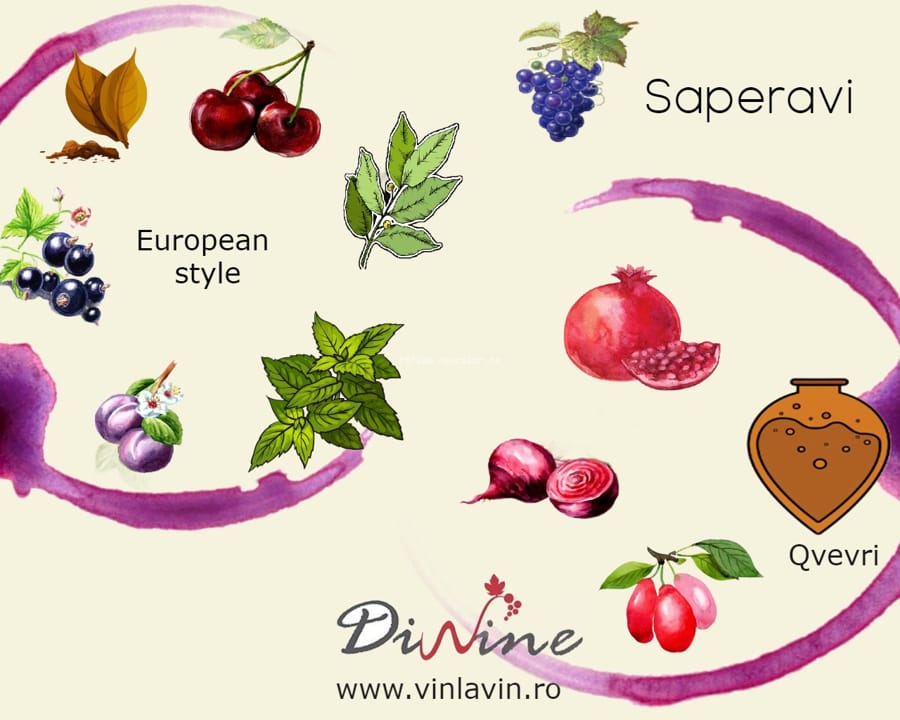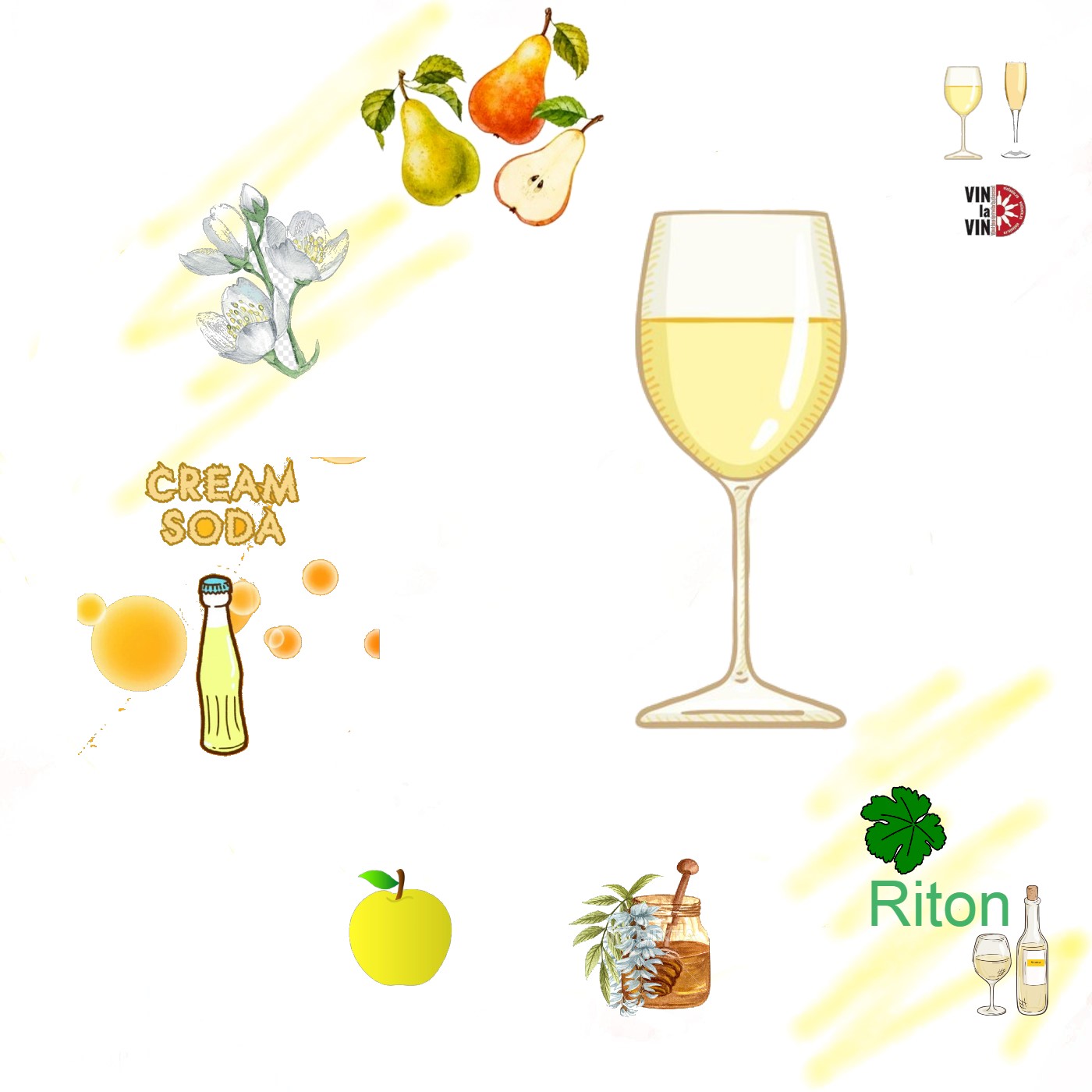Rkatsiteli is the most common white grape in Georgia. The name comprises two Georgian words: ‘rka’ (transl. horn) and ‘steli’ (transl. red) referring to the red ribs on the vine, quite atypical for a white variety. Like Saperavi, Rkațiteli belongs to the Black Sea basin group Vitis vinifera convar pontica Negr.
Agrobiological particularities
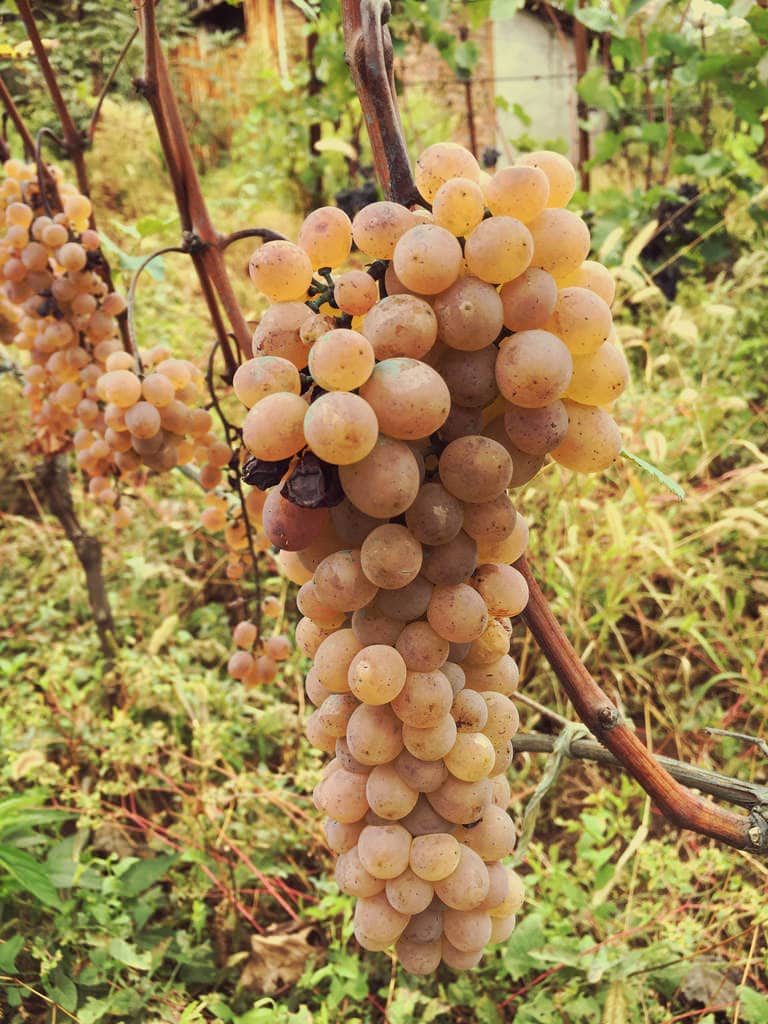
Rkatsiteli, of all the Georgian varieties, is the most resistant to phylloxera, including frost (-30° C). However, in rainy years it can be affected by powdery mildew. Although Rkatsiteli is very fickle, sensitive to drought and dry, hard soils, it can still withstand high temperatures. Growers therefore recommend planting the variety in warm regions with light, sandy soils near a water source. Recommended rootstocks: Riparia x Rupestris 101 -14, 3309; Berlandieri x Riparia Kober 5BB, including Chasselas x Berlandieri 41B.
Grapes are medium to large (180g – 260g) with cylindrical or conical-cylindrical shapes. To full maturity the grapes need 155 – 165 days and an active temperature range of 2950° C – 3100° C. The variety has a high productivity in warm and slightly humid regions compared to cool regions. Experiments have shown that Rkatsiteli has a strong response to the degree of stump loading. If overloading is accepted, shoots grow weak and thin and the weight of the grapes decreases. According to the specialists, 7 to 10 meshes are left on a cordon.
The berries are oval, medium-sized, yellow-green. The south-west exposure of the grapes gives the berries a darker pigmentation. The skin is thin and the must is juicy.
The Rkatsiteli variety has several clones: Rkatsiteli Vardisperi – very rare in Georgia because it is not resistant to cryptogamic diseases or frost. It has a pink colour. It produces semi-sweet and sweet wines.
In terms of genetic selections, Rkațiteli was involved in the creation of the variety Rkatsiteli Magaracha. A cross between Rkatsiteli, Magaracha and other white varieties such as Villar Blanc.
The new variety is resistant to frost and mange. The berries are medium round and the juice is tart. The wine is much more fragrant than the original Rkatsiteli. Aromas of white flowers and citrus, especially grapefruit, can be detected. Various kinds of liqueurs and other teas are made from this variety.
Origins

Unfortunately, no historical sources from before the 13th century have been saved, which makes it impossible to determine the exact birthplace of the Rkatsiteli variety. It is thought that the variety originated along the Alazani River between the towns of Eniseli and Logodehi in the Kakheti region (eastern Georgia).
Until 1985, when the ban imposed by Soviet leader Garbachev took effect, Rkatsiteli vineyards in Georgia were much more numerous. Today there are about 20 000 to 24 000 ha left. However, this variety is the most widespread in the South Caucasus because it is productive, frost and phylloxera resistant. Studies have also shown that the variety retains its acidity even in dry years. Moreover, Rkațiteli is a universal variety that guarantees a balance between sugar and acidity. It can produce dry wines, tiare, distillates (eaux de vie), sherry wines (similar to Port, Marsala, etc.). The first dry wine of the Rkațiteli variety was produced in the European style in 1943.
There are wines created from the Rkatsiteli variety and included in DPO and PGI appellations in the Kakheti region: Tsinandali, Vazisubani, Gurjaani, Kotekhi, Kisiskhevi and Napareuli and Tibaani (qvevri method). Often, Rkațiteli creates a perfect combination with the Mtsvane Kakhuri variety (15-20%). The Kardanakhi region is known for its tasty and semi-sweet wines. Rkatsiteli wines are kept in barrels for 12 months. In Georgia, most orange wines are made from Rkatsiteli.
Rkatsiteli is also adapted in other regions outside Georgia, such as Azerbaijan, Russia, Republic of Moldova, USA, Ukraine, China (known as “Baiyu”). In the Republic of Moldova there are 2 650 ha of Rkatsiteli.
Studies on the variety Rkatsiteli
Thanks to studies carried out by the Biotechnology Department of the Caspian Institute of Biological Resources of the Dagestan Scientific Centre of the Russian Academy of Sciences, I have been able to draw some conclusions about the Rkatsiteli variety. The study focuses on the biochemical characteristics of the Rkatskatsli variety in dependence on environmental factors, with emphasis on the specific terroir of Dagestan.
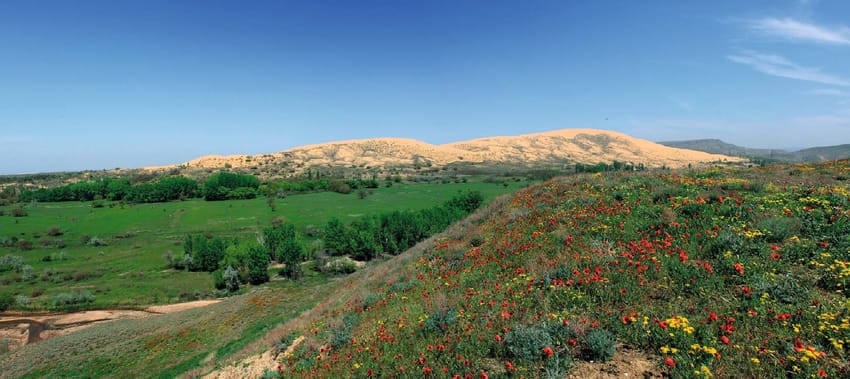
During 5 years of studies, the Biotechnology department observed how environmental factors in two different micro-regions influence the level of sugars, phenolic substances, including protein content in Rkatsiteli wine. So these two micro-regions are close to the dunes of the Sary-Kum desert in Dagestan.
The first micro-region is in close proximity to the desert. The sum of active temperatures here varies up to 4 100°C. The soil is sandy, 90% composed of silicates, silica and sycissile dioxide (also called quartz).
Microregion II is 12 km from the wilderness, but differs greatly from the first region. The soils here have a heavy, clayey structure. The sum of active temperatures ranges from 3 700°C to 3 750°C. Rainfall here does not exceed 366 mm per year.
The results of research and observations are as follows:
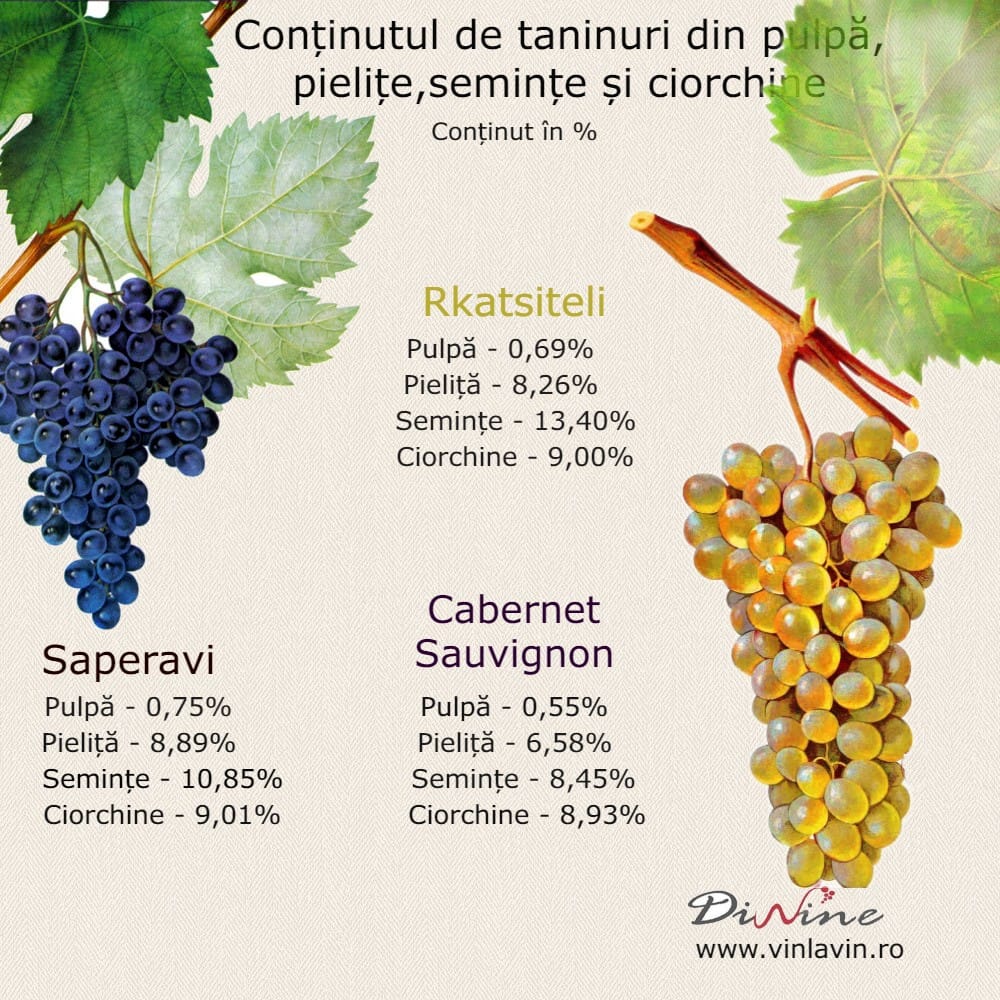
- Rkatsiteli wine in microclimate I has a much higher carbohydrate/sugar level (22.3 – 26.6 g/100cm3 ) than in microregion II (17.0 – 20.3 g/100cm3). Taken separately, sugars would indicate different values for each of these two research sectors. In microregion I the amount of fructose is higher than the glucose level in microregion II, which fluctuated during the years studied.
- Regarding phenolic substances in Rkatsiteli berries, those in microregion II had a higher level. The studies also specify an increase in the level of natural ascorbic acid for wine from grapes harvested from micro-region II. It should be noted that this ascorbic acid does not age the wine.
- Rkatsiteli absorbs mineral substances more intensively on sandy soils.
- The biochemical compounds in the fruit (in this case grapes), also known as flavonoids or vitamin P, depend on the high temperature level.
In conclusion, the Rkatsiteli variety prefers a warm terroir with an active temperature sum up to 3 100° C, sandy or relatively lightly structured soils and a relative amount of precipitation.
Organoleptic characteristics of Rkatsiteli
In the dry Rkațiteli version, the wine has a pale green colour with greenish reflections. It develops aromas of citrus, apple, white flowers, yellow plum, white peach and quince. More discreet may be notes of tropical fruits, for example bananas. In contact with the barrel, the wine gets hints of vanilla and other sweet spices, including nutmeg and hazelnuts. According to the qvevri method, referring to orange wine, the wine is characterised by aromas of honey, wax, dried orange peel, dried herbs, apricots, candied fruits with yellow pith.
Rkatsiteli orange wine has a more intense colour, a more tannic taste, higher alcohol, but with a more mellow acidity than the dry, fresh version. The alcohol level is between 11.8% – 13%. Sugar content varies between 178 g/dm3 and 180 g/dm3. Acidity can range from 7.5 g/dm3 – 8.3 g/dm3, sometimes as high as 9 g/dm3. These indicators underline the high acidity level of the variety.
Other names for Rkatsiteli: Mamali Rkatsiteli, Dedali Rkatsiteli, Kukura, Budashuri, Topolyok, Korolyok.
Culinary pairing
Dry Rkatsiteli and orange fits with Georgian cuisine. The fresh version is paired with fresher cheeses. The wine can be paired with mushroom sarm, fish, fried potatoes and beans, boiled meat with greens, pilav with mushrooms, bread with goat cheese.
Bibliography
- Nicolaescu; N. Perstniov, M. Godoroja, Recolta și Calitatea strugurilor soiului Rkațiteli în funcție de nivelul de dezvoltare a butucilor. Analele Universității Agrare de stat din Moldova, Chișinău, 2013;
- Tarda; I. Romanov, Soiuri de viță de vie în Moldova. Ed. Cartea Moldovenească, Chișinău, 1990;
- Anna Saldaze, 8000 Vintages of Georgian Wine. Ed. Sulakauri Publishing, Tbilisi, 2018;
- Н.Багатурия – Грузинское виноделие: теория и практика. Tbilisi, 2010;
- Г.Беридзе, Вина Грузии. Ed. Сабчота Сакартвело, Tbilisi, 1962;
- Tarda; I. Romanov, Soiurile standart de viță de vie din Moldova. Ed. Cartea Moldovenească, Chișinău 1968;
- Appellations Protected Designations of Origin (PDO), https://wine.gov.ge/En/Wine?page=1&pageSize=12
- Биохимические особенности винограда – сорта Ркацители в зависимости от экологических факторов, https://www.shorturl.at/shortener.php


